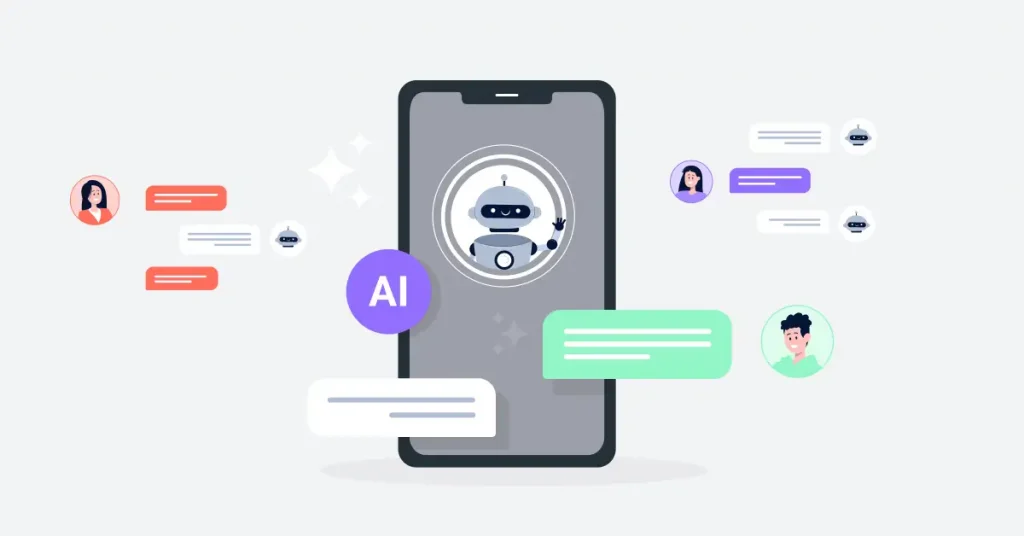
If you are working in a sales role today, you know how much has changed. Gone are the days when manually calling through a telephone book or keeping spreadsheets was the main job. Today, everyone is talking about Sales Automation. It is not just a buzzword; it is how businesses survive and grow quickly in a world that never sleeps. But what is driving this immense shift towards efficiency and better customer interaction? The answer, plain and simple, is Conversational Artificial Intelligence. This technology is fundamentally changing the way we think about the entire sales cycle, making processes not only faster but also much more human, paradoxically.
Sales Automation is essentially the use of software to handle repetitive and low-value tasks in the sales process. This frees up human representatives to focus on what they do best: building relationships and closing complicated deals. However, early attempts at Sales Automation often felt clumsy, leaving customers frustrated by slow response times or irrelevant information. The introduction of smart, conversational AI has changed the game completely, injecting necessary intelligence and speed into the core of Sales Automation. When you look at the successful teams, you will observe they leverage this technology to manage their flow of new business, ensuring no opportunity is missed because of a delay. This focus on smooth operations is essential for real revenue growth.
The Dawn of Digital Sales: Why Conversational AI Matters
The transition to digital sales channels has been swift. Prospects expect instant answers, anytime, and on any platform they choose. If your business cannot keep up with this demand for immediacy, you will lose out, simple as that. Conversational AI acts as the first, tireless layer of your digital sales team. It is available 24/7, ready to engage potential buyers the moment they show interest, whether that is on your website, a messaging app, or via email. This constant availability is a cornerstone of modern Sales Automation.
Consider the sheer volume of initial inquiries a successful company receives. Trying to manage all of that manually would be an utter catastrophe for any team trying to achieve scalable revenue growth. Instead, Conversational AI manages the initial deluge, ensuring that every lead is acknowledged, qualified, and routed correctly without human intervention being needed immediately. This ability to handle high-volume interactions is key for robust lead management. The effectiveness of a modern digital sales strategy hinges upon the sophistication of this initial AI-driven engagement. This is where truly smart Sales Automation starts to demonstrate its immense value proposition. The goal, ultimately, is to shorten the overall sales cycle by eliminating time-consuming, low-return activities that previously bogged down human representatives.
Streamlining the Initial Sales Cycle
One of the most valuable contributions of AI is the immediate impact it has on the front end of the sales cycle. The moment a visitor lands on your website, the AI can begin asking smart, qualifying questions. It determines the prospect’s interest level, budget, and specific needs. This rapid triage is a huge part of efficient lead management. Instead of human reps wasting precious time chasing unqualified leads, the AI ensures that only warm or hot prospects enter the human-handled pipeline. This process is a wonderful example of automated sales in action, where the technology executes routine, rule-based tasks with perfect consistency.
Conversational AI also helps in gathering crucial, structured data about the prospect right from the very first interaction. This information is vital for the eventual human takeover and makes the overall sales cycle much more efficient. By automating this crucial initial segment, businesses ensure a smoother start to every new relationship. Truly successful lead management depends on this quick and accurate qualification, making the entire sales cycle more productive and less prone to costly human errors.
Conversational AI: The Engine Behind Modern Sales Automation
The real power of conversational AI lies in its ability to sound natural while performing complex functions. It moves beyond simple chatbot scripts and begins to understand intent, handle ambiguity, and maintain context across multiple interactions. This is the sophisticated engine that runs effective Sales Automation. These systems can perform complex tasks, such as scheduling a demo, providing detailed product information, or updating records, all through a natural language conversation. The consistency and speed offered by automated sales solutions are things that manual processes simply cannot achieve.
Boosting Lead Nurturing and Qualification
The journey from a cold prospect to a paying customer is rarely a straight line; it requires careful and persistent lead nurturing. Conversational AI systems are perfectly suited for this long-term engagement. They can send follow-up information, answer common questions, or nudge a hesitant prospect toward the next step in the sales cycle. This lead nurturing happens around the clock, personalized to the prospect’s needs and timing, ensuring maximum engagement.
Imagine the tediousness of a human sales rep having to follow up with dozens of inactive leads every single week. It is soul-crushing work, but it is necessary for revenue growth. Automated sales solutions take this burden away. The AI monitors engagement and knows exactly when to intervene with relevant content or a personalized message, transforming tentative interest into genuine momentum. This dedicated, automated process is the secret to high-performing lead nurturing strategies, directly contributing to superior lead management across the entire pipeline. The accuracy of AI in qualifying leads means that the time of your sales team is always prioritized for the most promising opportunities.
Perfecting CRM Integration for Seamless Data Flow
One cannot discuss modern Sales Automation without talking about CRM integration. The conversational AI is not an island; it is an integrated part of your technology stack. Every single interaction, every piece of data gathered during the conversation, must be instantly and accurately logged into your customer relationship management system. This level of seamless CRM integration is absolutely non-negotiable for effective Sales Automation.
When a human representative finally takes over the conversation, they need a complete, chronological record of the AI’s interaction. This smooth transition, facilitated by robust CRM integration, prevents the prospect from having to repeat themselves, which, as we know, is a massive point of frustration. The better the CRM integration, the more intelligent your Sales Automation becomes, as the AI can learn from historical data and refine its own processes. This continuous learning is crucial for maintaining a competitive edge in digital sales. The quality of this data flow also directly impacts the ability to achieve accurate sales forecasting.
Measuring Success: Revenue Growth and Sales Forecasting
Ultimately, the reason any business invests in Sales Automation is to see tangible results on the bottom line. The adoption of Conversational AI has a profound, measurable effect on revenue growth. By dramatically increasing the speed of the sales cycle and ensuring consistent lead nurturing, businesses can process a greater volume of deals with fewer resources. It is about working smarter, not just harder.
Furthermore, the quality of data provided by these automated sales systems is a game-changer for sales forecasting. Because the AI is constantly qualifying and updating prospect status in real-time, the data feeding the forecasts is fresher and far more reliable than manual inputs. Better sales forecasting allows leadership to make more informed decisions about resource allocation, inventory, and overall business strategy. This data-driven approach is a key differentiator for companies achieving significant revenue growth. When you combine the efficiency of Sales Automation with the predictability offered by superior sales forecasting, you create a powerful, self-optimizing commercial engine. The continued refinement of digital sales strategies depends wholly on this feedback loop.
The Future is Automated Sales Automation
The journey of Sales Automation is far from over, but the inclusion of Conversational AI has brought us to a fascinating point. It is no longer about simply automating simple, repetitive tasks; it is about automating intelligence and engagement. The future will see even more seamless CRM integration and incredibly sophisticated AI capable of handling almost the entire sales cycle for low-to-mid-value deals, allowing human experts to focus only on complex, strategic, or high-value accounts. Every organization serious about accelerated revenue growth and accurate sales forecasting must embrace these tools, and something like Jarvis Reach fits right in because it tightens your data and makes your automation smarter without extra effort. The reality is this: powerful Sales Automation is here, and it is powered by a conversation. The time to adopt advanced automated sales solutions is certainly right now.
